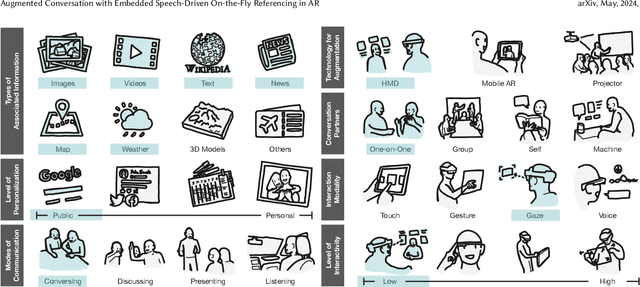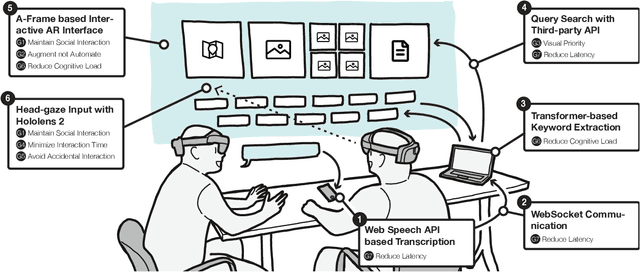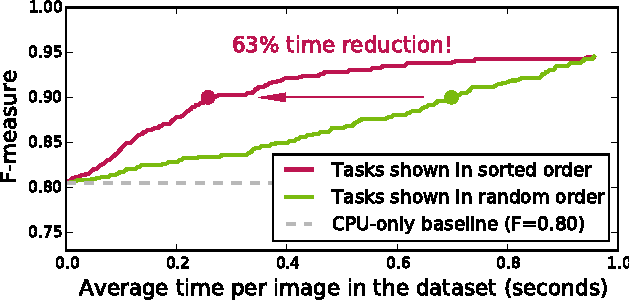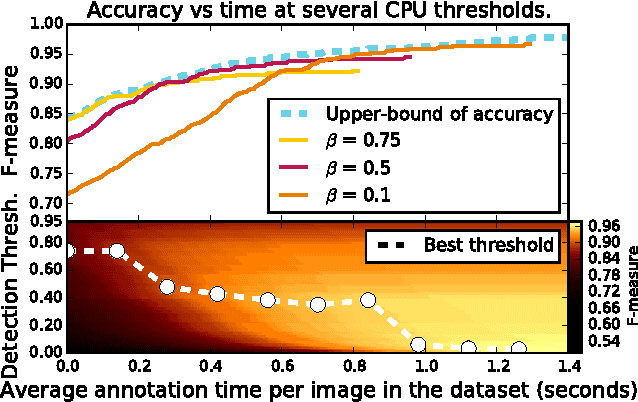Rajan Vaish
Augmented Conversation with Embedded Speech-Driven On-the-Fly Referencing in AR
May 28, 2024



Abstract:This paper introduces the concept of augmented conversation, which aims to support co-located in-person conversations via embedded speech-driven on-the-fly referencing in augmented reality (AR). Today computing technologies like smartphones allow quick access to a variety of references during the conversation. However, these tools often create distractions, reducing eye contact and forcing users to focus their attention on phone screens and manually enter keywords to access relevant information. In contrast, AR-based on-the-fly referencing provides relevant visual references in real-time, based on keywords extracted automatically from the spoken conversation. By embedding these visual references in AR around the conversation partner, augmented conversation reduces distraction and friction, allowing users to maintain eye contact and supporting more natural social interactions. To demonstrate this concept, we developed \system, a Hololens-based interface that leverages real-time speech recognition, natural language processing and gaze-based interactions for on-the-fly embedded visual referencing. In this paper, we explore the design space of visual referencing for conversations, and describe our our implementation -- building on seven design guidelines identified through a user-centered design process. An initial user study confirms that our system decreases distraction and friction in conversations compared to smartphone searches, while providing highly useful and relevant information.
On Optimizing Human-Machine Task Assignments
Sep 24, 2015

Abstract:When crowdsourcing systems are used in combination with machine inference systems in the real world, they benefit the most when the machine system is deeply integrated with the crowd workers. However, if researchers wish to integrate the crowd with "off-the-shelf" machine classifiers, this deep integration is not always possible. This work explores two strategies to increase accuracy and decrease cost under this setting. First, we show that reordering tasks presented to the human can create a significant accuracy improvement. Further, we show that greedily choosing parameters to maximize machine accuracy is sub-optimal, and joint optimization of the combined system improves performance.
 Add to Chrome
Add to Chrome Add to Firefox
Add to Firefox Add to Edge
Add to Edge